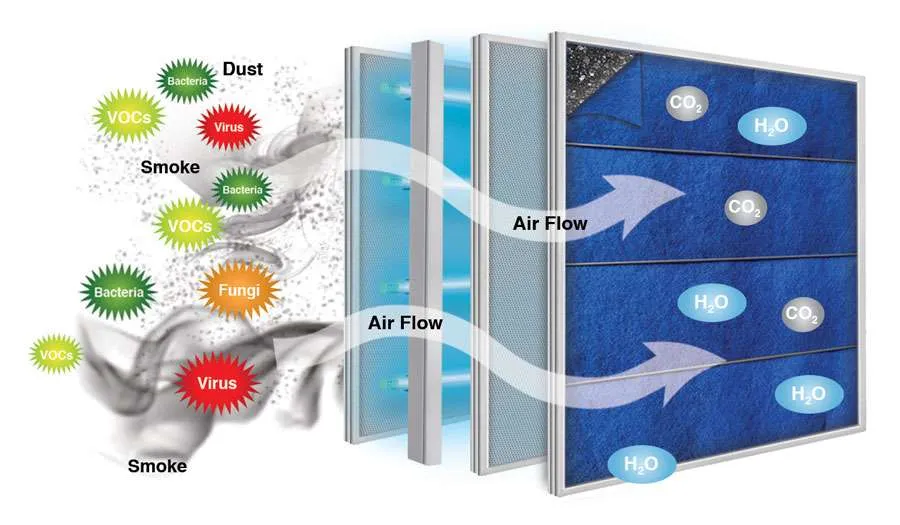揮発性有機化合物の光触媒酸化 (VOC) 紫外線発光ダイオードを使用して空気中で (365nm UV-LED)

この研究の目的は、紫外発光ダイオードの応用を実験的に調査することでした。 (UV-LED) 揮発性有機化合物の除去用 (VOC) 空気から. For this purpose, a 365 nm UV-LED and a photocatalyst were used in a batch reactor to study the photocatalysis of toluene as the representative pollutant. It was demonstrated that combining reduced graphene oxide (rGO) with titanium dioxide (TiO2) and immobilizing the catalyst on the porous substrate could significantly improve the photocatalytic activity compared with the pristine TiO2 catalyst on a solid substrate. Photocatalyst deactivation was also studied by running cyclical tests. The photocatalytic crystal structure remained intact, but catalytic activity declined more than 80% after five consecutive photocatalytic tests for treating relatively high toluene concentrations. The adsorbed intermediates of toluene photocatalysis, such as benzoic acid, benzaldehyde, and benzyl alcohol, were identified, and the deactivation mechanism was proposed. It was shown that the deactivated photocatalyst can be effectively regenerated by UV-LED irradiation of 38.5 mW/cm2 irradiance within two hours. Overall, it was concluded that the UV-LED with a TiO2 on porous support provides an effective method for practical air purification applications.
 深セン英豊光電子有限公司, 株式会社.
深セン英豊光電子有限公司, 株式会社.
